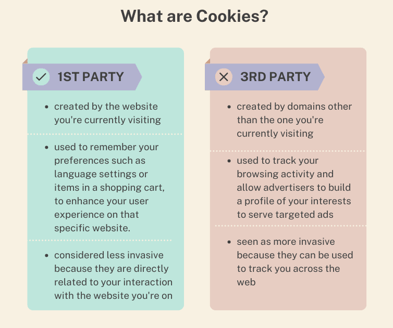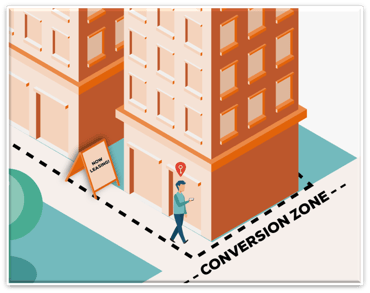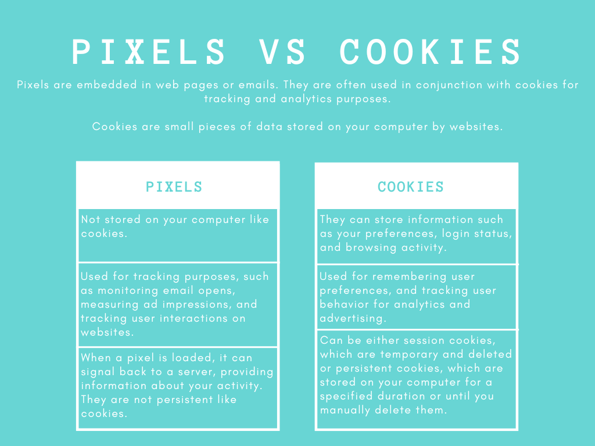3 Multifamily Marketing Insights That Should Shape Your 2026 Strategy
At Apartment Geofencing, we love when our team gets out into the industry and comes back with real intel you can actually use.

Third-party cookies have long been a staple for understanding user behavior, targeting ads, and measuring campaign effectiveness. However, recent developments signal a significant shift in this landscape, with major browsers like Google Chrome phasing out support for third-party cookies. In this blog post, we'll dive into what third-party cookies are, why they've been helpful for marketers, and how their impending demise will reshape marketing strategies.

Third-party cookies are small pieces of data that are created by domains other than the one a user is currently visiting.
These cookies are often utilized by third-party services, such as advertising networks or analytics platforms, to track user activity across multiple sites. Unlike first-party cookies, which are set by the website domain being visited, third-party cookies are associated with external domains. So what exactly does that mean?
Let's break it down further:
Imagine you're at a party with lots of different snacks. You've got cookies, cupcakes, and fruit. Imagine some of those cookies have little trackers on them. These trackers follow you around the party and see what snacks you're eating and how much you're enjoying them.
Those cookies with trackers on them are like third-party cookies on the internet. They're not from the website you're visiting but from other places, like advertisers or social media sites. These cookies keep track of what websites you visit, what you click on, and sometimes even what you buy.
So, just like the cookies at the party, third-party cookies are like little spies that follow you around the internet, keeping tabs on what you're doing.
Third-party cookies play a pivotal role in digital marketing by enabling various functionalities, such as retargeting and view-through conversions. Retargeting leveraged third-party cookies to deliver personalized ads to users based on their past interactions with a website. View-through conversions tracked instances where users saw an ad, didn't click on it, but later made a purchase influenced by the ad exposure.
These cookies provided marketers with valuable insights into user behavior, allowing them to target ads more effectively, measure campaign performance, and optimize their strategies accordingly. By tracking user activity across different websites, third-party cookies facilitated the delivery of personalized and relevant content, enhancing the overall user experience.
The phasing out of third-party cookies represents a big shift in the digital marketing landscape, forcing marketers to reassess their strategies and adapt to new realities. With the impending loss of third-party cookie tracking, marketers will need to explore alternative methods for targeting, measurement, and attribution.
It's time to go back to traditional metrics like conversions to broader measures of engagement and brand awareness. We're talkin', reach, frequency, cost, and engagement. This may include leveraging your customer databases for retargeting campaigns, optimizing website content to enhance user experience, and investing in channels that prioritize engagement over conversions. Let's explore this further.
Marketers will need a well-rounded digital marketing campaign that includes branding and awareness, reputation management, searchability, findability within search engines, engaging content, and brand ambassadors. Metrics like cost per thousand (CPM) and frequency become key indicators in determining the efficiency and impact of your advertising. When budgeting, it will be important to determine the allocation for each focus area without directly comparing them, as branding and awareness serve different purposes from findability.
Now, let's talk about engagement because this will be essential. Meta-advertising platforms like Facebook and Instagram may see increased popularity due to their robust targeting capabilities and high engagement rates. Meta has amazing engagement on their ads across Facebook and Instagram, so marketers can use this to their advantage. Marketers may need to reallocate their advertising budgets and explore new channels to reach their target audience effectively.
Another strategy is a greater reliance on first-party data, such as customer databases and website analytics. By leveraging their own data assets, marketers can create more personalized experiences for their audience and mitigate the impact of losing third-party cookie tracking.
Once hailed as a solution for enhancing conversion rates and optimizing campaigns, cookies became a victim of their success. The desire for more data, coupled with the quest for absolute attribution, led to an overload of cookies, slowing down user experiences.
We confess - we got greedy, right? We wanted to know every detail, track every user, and tie conversions to every conceivable source. The result? Consumers and platforms reached their limit, and platforms like Google announced the phase-out of third-party tracking cookies.

Let's cut to the chase: third-party tracking cookies may be on their way out, but geofencing remains unscathed. Geofencing, the backbone of our campaigns, operates on the foundation of Device ID and GPS coordinates. Unlike other marketing strategies, cookies play no role in the targeting or tracking of our geofencing campaigns. This means your geofencing campaigns are not only secure but set to become even more precise.
But what about retargeting? We understand its significance, and that's why we've been proactive in researching solutions that help us leverage first-party data to enable targeted advertising. Finding alternatives is part of our commitment to providing diverse options for more effective targeting.

No Change to Geofencing Campaigns: Your geofencing campaigns will continue unaffected, and the emphasis on Device ID targeting will only enhance their effectiveness.
Evolution in Retargeting: Expect a shift in retargeting strategies with alternative identifiers, ensuring your campaigns remain as targeted and impactful as ever.
We urge our clients to continue to install their tracking pixels for their Site and Search Retargeting Campaigns (ReTV) as tracking pixels will still gather data on user interactions on your website and can collect first-party data. If you need more help understanding how pixels can work to your benefit, reach out to our sales team today!

The end of third-party tracking cookies marks a return to the roots of marketing, where optimization is based on a variety of markers. At ApartmentGeofencing.com, we welcome this change and assure our clients that we are navigating these shifts with dedication and innovation. Stay tuned for more updates as we continue to evolve, always committed to meeting the dynamic needs of our clients in this post-cookie era.

At Apartment Geofencing, we love when our team gets out into the industry and comes back with real intel you can actually use.

Most multifamily marketers know paid social is powerful, but too often, it’s one-dimensional. You run a few ads, retarget, and hope something sticks.

Retargeting is the comfort zone of digital marketing.